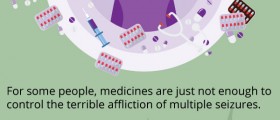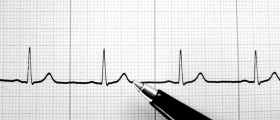
The National Service Framework from the Department of Health provides doctors special guidance and teaches nurses and other members of the medical staff how to treat patients who suffer from condition such as epilepsy. Also, it helps patients decide what kind of treatment is best for them, allowing them to opt for health facilities they desire. Finally, the guideline provided help patients with epilepsy live a well-organized, independent life.
The Treatment for Epilepsy
Basically, a person is not an epileptic until he/she has suffered from two seizures. Once a second seizure appears, epilepsy is diagnosed. Regretfully, there is no cure for epilepsy yet. Nevertheless, numerous medications and treatment measures can take care of symptoms of this illness, blocking seizures.
Medications that are used for treating epilepsy are called anti-epileptic drugs. In fact, these drugs are helping people live with this illness in about 70% of cases.
Diagnosis of Epilepsy
In order for this condition to be properly diagnosed, a series of tests needs to take place. For example, an electroencephalogram is necessary for showing brain activity in patients suspected to suffer from epilepsy. Also, an MRI scan may be needed for assessing any possible brain damage. Finally, stroke or other previous brain problems are taken into consideration.
As it was mentioned above, drugs are the most common type of therapy and treatment for epileptic patients. However, if these fail to prevent seizures from happening, a surgery may be inevitable. The surgery is only possible when the part of the brain to be removed is not a vital one.
In cases when the surgery is impossible, special implants may be placed under the patient's skin, sending proper electrical impulses to the brain. Alternatively, certain dietary changes and modifications can prove to be quite effective in controlling this condition.
Facts about Anti-Epileptic Drugs
The main benefit of these drugs is their capability to suppress epileptic seizures, by affecting the brain chemicals which conduct electrical impulses in the area.
Some types of antiepileptic drugs have been used for decades while certain newer types of these drugs have only been introduced recently. The former group of drugs encompasses sodium valproate, carbamazepine, phenytoin, Phenobarbital and primidone. On the other hand, the latter include gabapentin, lamotrigine, levetiracetam, oxcarbazepine, tiagabine, topiramate and vigabatrin, becoming an option once a patient cannot take any of the older types of anti-epileptic medications.
These drugs are initially administered in low doses and doctors usually increase the dose until seizures cease to affect the sufferer. If a single drug is found to be ineffective, an alternative one is prescribed instead. Some drugs of this type may trigger side-effects such as nausea, stomach pain, fatigue, vertigo, nervousness and mood swings and overdose may lead to concentration difficulties, vomiting and vision issues.
















Your thoughts on this
Loading...